- Understanding the Basics of Growing Cabbage
- Choosing the Right Variety
- Preparing the Soil
- Planting and Germination
- Care and Maintenance
- In Conclusion
- Selecting the Right Cabbage Variety for Your Garden
- 1. Climate
- 2. Head Type
- 3. Maturity Date
- 4. Disease Resistance
- 5. Garden Space
- 6. Culinary Use
- Soil Preparation Techniques for Cabbage Planting
- Sowing Timing: Determining the Ideal Moment for Planting Cabbage
- Factors to Consider:
- Calculating the Sowing Date:
- Other Considerations:
- Calculating the Optimal Spacing between Cabbage Plants
- Factors to Consider
- Recommended Spacing Guidelines
- Maintaining the Health of Cabbage Plants: Pest and Disease Control
- Pest Control:
- Disease Control:
- Organic Fertilizers and Nutrient Management for Environmentally Friendly Cabbage
- Benefits of Organic Fertilizers
- Nutrient Management for Cabbage
- Additional Tips for Environmentally Friendly Cabbage Production
- Harvesting and Storing Cabbage: Tips for Extending the Shelf Life
- Harvesting Cabbage
- Storing Cabbage
- Extending Shelf Life
- “Question-Answer”
- What are the secrets to growing cabbage?
- How can I calculate the sowing timing for cabbage?
- What kind of environment does cabbage require to grow well?
- How can I grow cabbage while minimizing the use of chemical pesticides?
- What care does cabbage require after sowing?
- “Video” Growing Cabbages from Sowing to Harvest
Growing cabbage is a rewarding and satisfying experience, but it requires careful planning and timing to ensure a successful harvest. In this article, we will explore the secrets of growing cabbage, including how to calculate the optimal sowing timing and how to obtain an environmentally friendly product.
Timing is crucial when it comes to sowing cabbage seeds. Cabbage is a cool-season crop that prefers mild temperatures and ample sunlight. The optimal time to sow cabbage seeds depends on the region and climate, but a general rule of thumb is to sow the seeds indoors 4-6 weeks before the last frost date. This allows the seedlings to establish a strong root system before being transplanted outdoors.
Calculating the sowing timing also involves considering the cabbage variety and its growth requirements. Some cabbage varieties mature faster than others, so it’s essential to choose the right variety for your desired harvest time. Additionally, cabbage requires a minimum of 6 hours of sunlight per day, so make sure to choose a location in your garden that receives adequate sunlight.
In order to obtain an environmentally friendly cabbage product, it’s important to practice organic and sustainable gardening methods. This includes using organic fertilizers, compost, and avoiding the use of chemical pesticides and herbicides. By nurturing the soil with organic matter and using natural pest control methods, you can ensure that your cabbage is free from harmful chemicals and safe for consumption.
In conclusion, growing cabbage successfully requires careful planning and timing. By calculating the optimal sowing timing and practicing environmentally friendly gardening methods, you can grow healthy and delicious cabbage that you can feel good about eating.
Understanding the Basics of Growing Cabbage
Growing cabbage can be a rewarding and enjoyable experience. Whether you are a beginner or an experienced gardener, understanding the basics of growing cabbage is essential for success.
Choosing the Right Variety
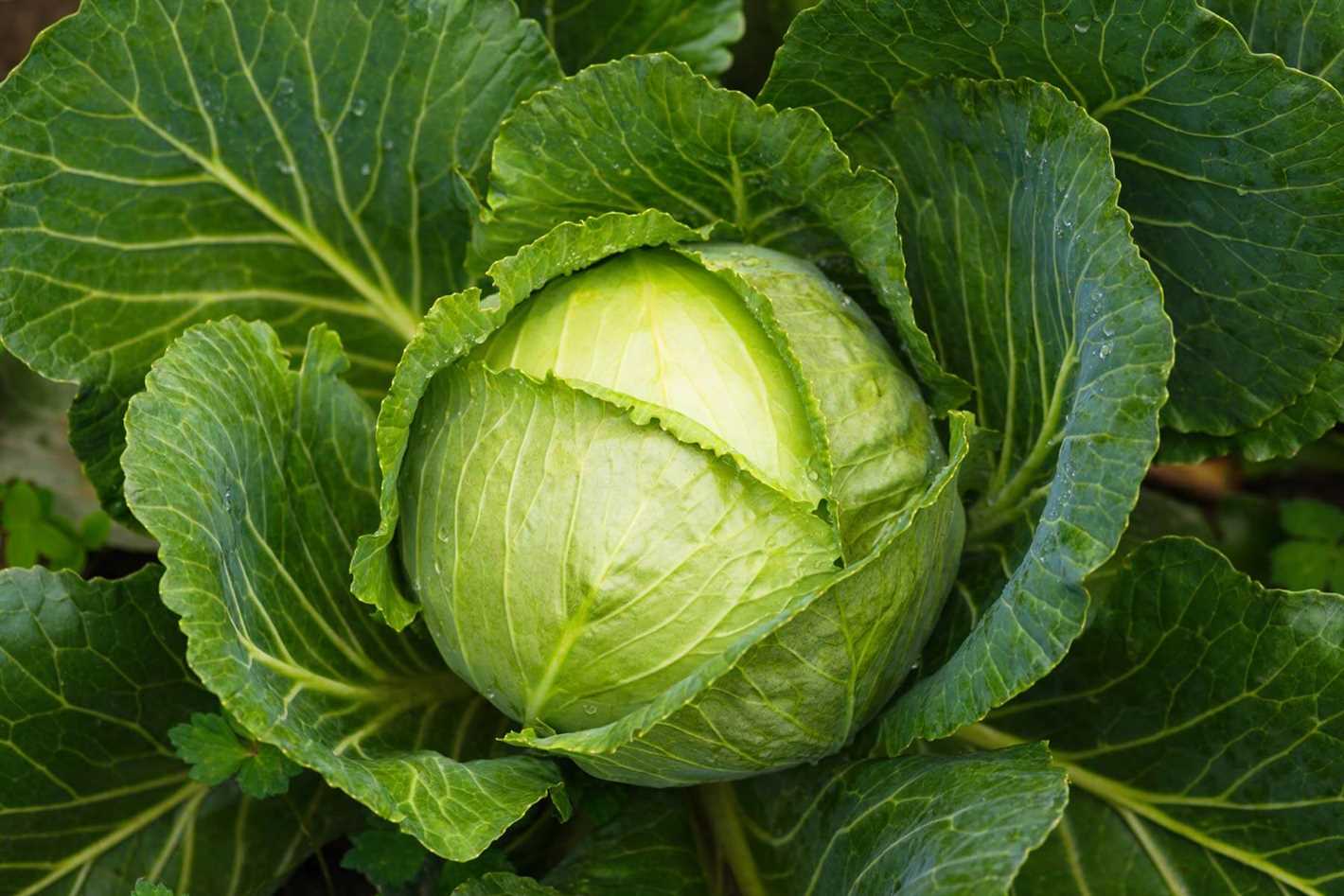
There are many varieties of cabbage to choose from, each with its own unique characteristics. When selecting a variety, consider factors such as maturity time, head size, and disease resistance. Some popular cabbage varieties include:
- Green cabbage
- Savoy cabbage
- Napa cabbage
- Red cabbage
Preparing the Soil
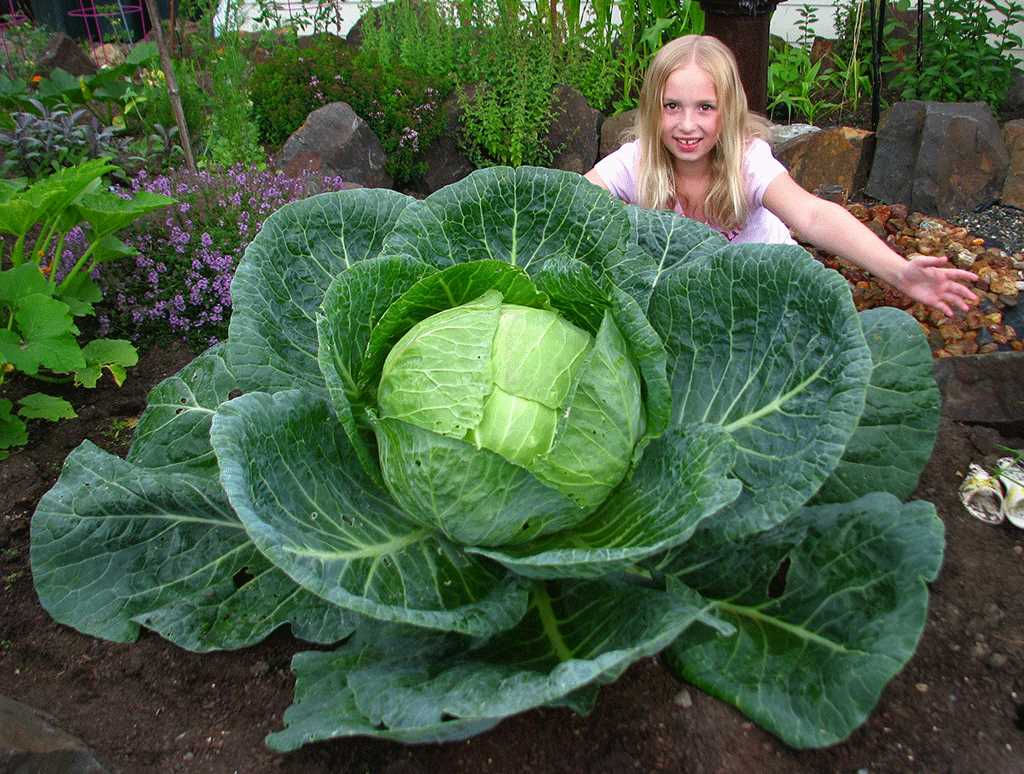
Before planting cabbage, it is important to prepare the soil properly. Cabbage prefers well-draining soil that is rich in organic matter. Start by removing any weeds or debris from the area. Then, amend the soil with compost or well-rotted manure to improve its fertility and drainage.
Planting and Germination
Cabbage can be started from seeds indoors or directly sown in the garden. The ideal time to plant cabbage depends on your climate and growing season. In general, cabbage should be planted in early spring for a summer harvest or in mid to late summer for a fall harvest.
Sow cabbage seeds about ½ inch deep and 2 inches apart. Once the seeds have germinated, thin the seedlings to a spacing of 12-18 inches apart to allow room for the cabbage heads to develop.
Care and Maintenance
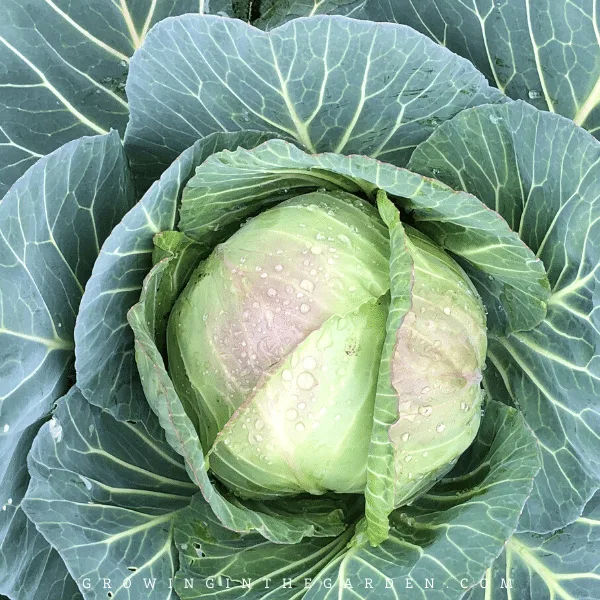
Proper care and maintenance are crucial for the successful growth of cabbage. Here are a few important tips:
- Water regularly: Cabbage requires consistent moisture, especially during hot and dry periods. Water deeply and regularly to keep the soil evenly moist.
- Fertilize: Cabbage is a heavy feeder and benefits from regular fertilization. Apply a balanced fertilizer high in nitrogen to promote healthy leaf growth.
- Protect from pests: Cabbage is prone to attacks from pests such as aphids, cabbage worms, and slugs. Use organic pest control methods or install floating row covers to protect your plants.
- Harvesting: Harvest cabbage when the heads are firm and fully formed. Use a sharp knife to cut the cabbage head off at the base of the plant.
In Conclusion
By understanding the basics of growing cabbage, you can successfully cultivate this nutritious and versatile vegetable in your own garden. Remember to choose the right variety, prepare the soil properly, provide proper care and maintenance, and enjoy the fruits of your labor when it’s time to harvest.
Selecting the Right Cabbage Variety for Your Garden
Cabbage is a versatile vegetable that can be grown in many different climates and conditions. However, not all cabbage varieties are suitable for every garden. When selecting a cabbage variety for your garden, there are several factors to consider:
1. Climate
Cabbage varieties can be classified into different groups based on their tolerance to heat or cold. If you live in a colder region, choose a cabbage variety that is cold-hardy and can withstand frost. On the other hand, if you live in a warmer climate, opt for a heat-tolerant cabbage variety that can thrive in high temperatures.
2. Head Type
Cabbage varieties can have different head types, including round, flat, conical, or pointed. The head type can affect the texture and flavor of the cabbage. Round-headed cabbages tend to be more compact and have a sweeter flavor, while flat-headed cabbages have a milder taste. Consider your personal preference and the intended use of the cabbage when choosing the head type.
3. Maturity Date
Different cabbage varieties have varying maturity dates, ranging from early to late. Early-maturing varieties can be harvested sooner, while late-maturing varieties require more time to grow. Consider your desired harvest time and the length of your growing season when selecting a cabbage variety.
4. Disease Resistance
Cabbages can be susceptible to various diseases, such as clubroot, black rot, and fusarium yellows. To minimize the risk of disease, select cabbage varieties that are resistant to common diseases in your area. Check the seed packets or labels for information on disease resistance.
5. Garden Space
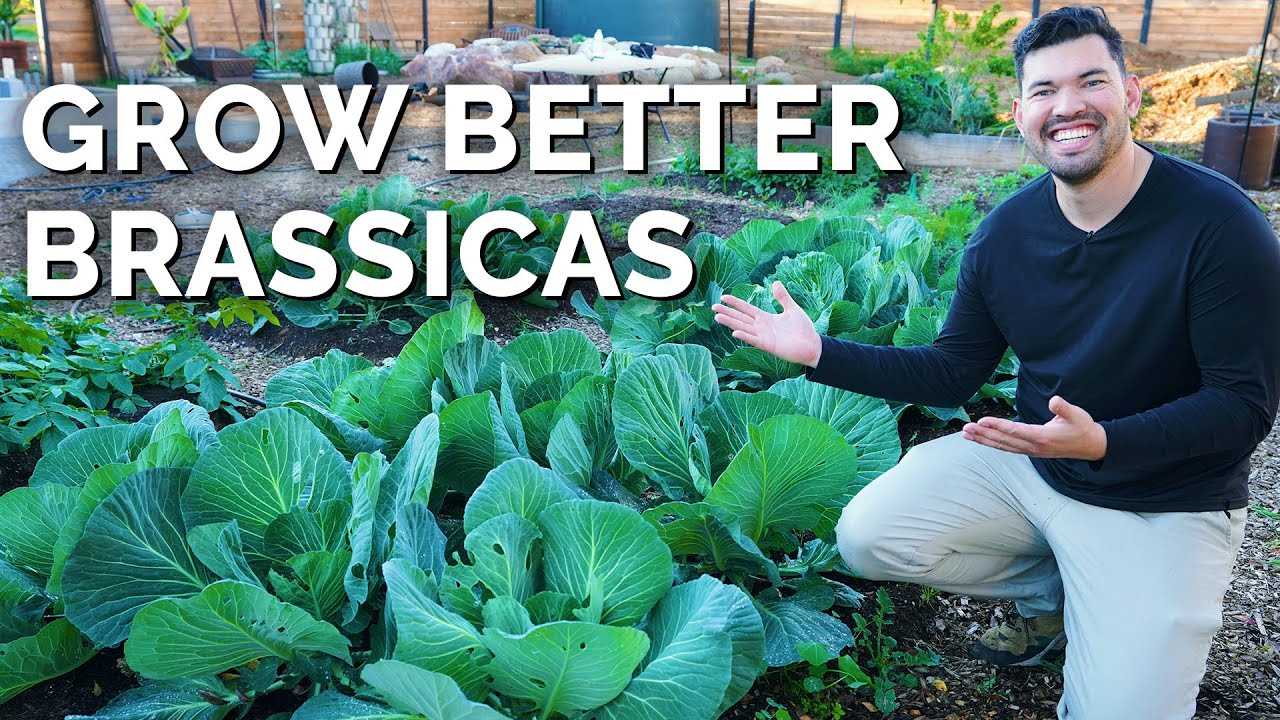
Consider the available space in your garden when choosing a cabbage variety. Some cabbage varieties can take up more space due to their larger heads or sprawling nature. If you have limited space, opt for compact or mini cabbage varieties that are suitable for container gardening or smaller garden plots.
6. Culinary Use
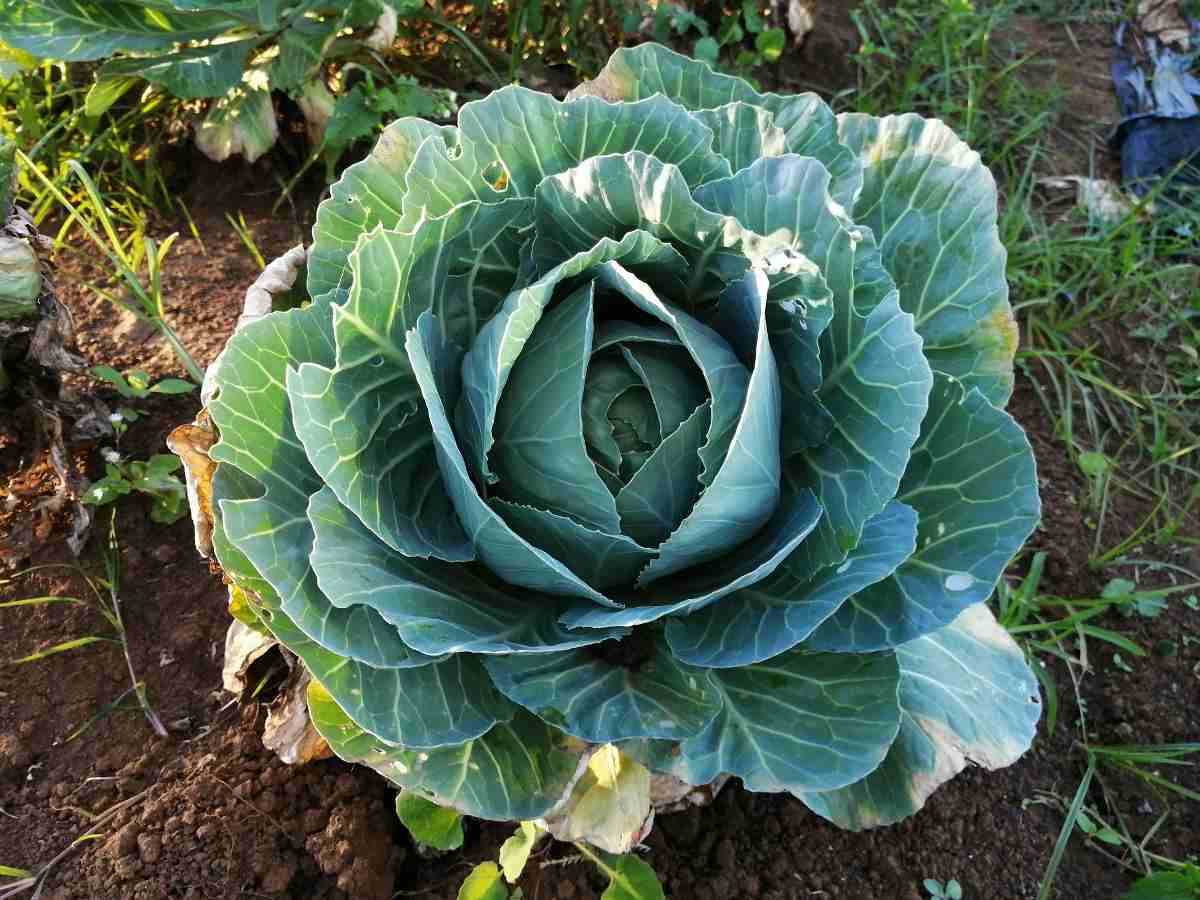
Last but not least, consider the intended culinary use of the cabbage. Some cabbage varieties are better suited for raw consumption in salads, while others are more suitable for cooking or fermenting. Determine how you plan to use the cabbage in your kitchen and choose a variety that fits your culinary needs.
By considering these factors, you can select the right cabbage variety that will thrive in your garden and meet your specific preferences and requirements.
Soil Preparation Techniques for Cabbage Planting
Growing cabbage requires proper soil preparation to ensure the plants have the best chance of thriving. Here are some techniques for preparing the soil before planting cabbage:
- Clean the area: Start by removing any weeds, rocks, or debris from the planting area. This will help create a clean and fertile space for the cabbage plants to grow.
- Loosen the soil: Use a garden fork or a tiller to loosen the soil to a depth of about 8-10 inches. This will help improve drainage and allow the roots to penetrate the soil easily.
- Amend the soil: If the soil is lacking in nutrients, you can amend it by adding organic matter such as compost or well-rotted manure. This will provide a good source of nutrients for the cabbage plants.
- Adjust the pH: Cabbage prefers slightly acidic soil with a pH between 6.0 and 6.8. You can adjust the pH by adding lime to raise it or sulfur to lower it, depending on your soil’s current pH level.
- Test the soil: It’s a good idea to test the soil to determine its nutrient levels and pH. You can send a sample of your soil to a local agricultural extension office or use a home testing kit.
- Work in fertilizer: Before planting, incorporate a balanced fertilizer into the soil according to the package instructions. This will provide additional nutrients for the cabbage plants as they grow.
- Create raised beds: If your soil doesn’t drain well, consider creating raised beds for planting cabbage. Raised beds provide better drainage and prevent waterlogged soil, which can lead to root rot.
- Provide proper spacing: Cabbage plants need enough space to grow and develop properly. Ensure that you space the plants according to the variety you’re planting, typically around 12-18 inches apart.
- Mulch: After planting, apply a layer of organic mulch around the cabbage plants. This will help retain moisture, suppress weeds, and regulate soil temperature.
- Water regularly: Cabbage requires consistent moisture to grow well. Water the plants regularly, keeping the soil evenly moist but not waterlogged.
By following these soil preparation techniques, you can create an ideal growing environment for cabbage and increase your chances of obtaining a healthy and environmentally friendly crop.
Sowing Timing: Determining the Ideal Moment for Planting Cabbage
Planting cabbage at the right time is crucial for its successful growth and development. Timing plays a significant role in determining the quality and yield of the crop. By understanding the ideal sowing timing for cabbage, you can ensure that your plants thrive and produce an environmentally friendly product.
Factors to Consider:
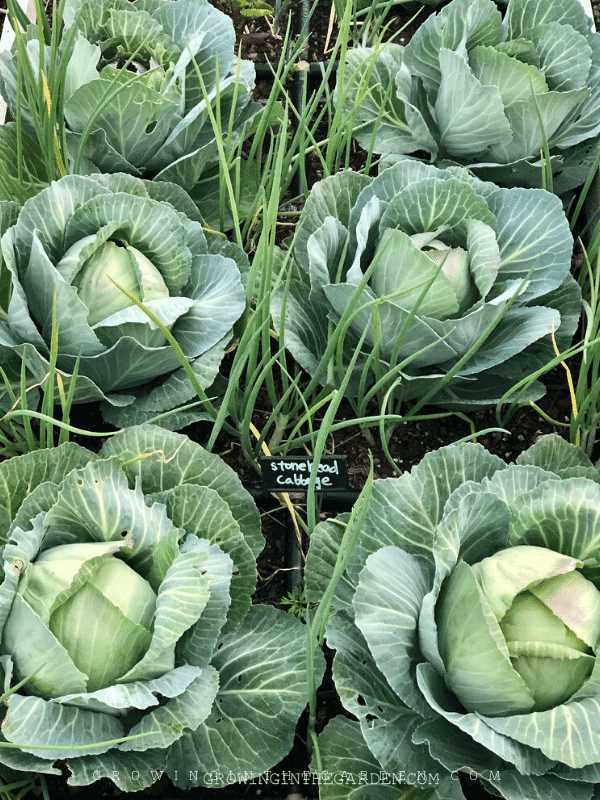
- Climate: The climate of your region is one of the primary factors to consider when determining the ideal sowing time for cabbage. Cabbage is a cold-season crop and prefers cool temperatures between 45°F to 75°F (7°C to 24°C). It is important to avoid extreme temperatures, as they can negatively impact the growth and development of the plants.
- Frost Dates: Knowing the average last spring frost date and first fall frost date in your area is essential for determining the ideal sowing time. Cabbage can tolerate light frosts, but it is best to avoid planting it when frost is still a common occurrence.
- Seedling Development: Cabbage plants grow best when the soil temperature is between 55°F to 75°F (13°C to 24°C). It takes approximately 4 to 6 weeks for cabbage seeds to develop into seedlings that are ready for transplanting. Therefore, you should count backward from the estimated transplanting date to determine the ideal sowing time.
Calculating the Sowing Date:
Follow these steps to calculate the ideal sowing date for cabbage:
- Determine the average last spring frost date in your area.
- Count backward by 4 to 6 weeks to estimate the optimal transplanting date.
- Count backward further by the number of days required for seed germination (usually 6 to 10 days) to determine the ideal sowing date.
For example, if the average last spring frost date in your area is April 15th and it takes cabbage seeds 7 days to germinate, the ideal sowing date would be around March 24th. This calculation allows enough time for the seedlings to develop and be ready for transplanting after the danger of frost has passed.
Other Considerations:
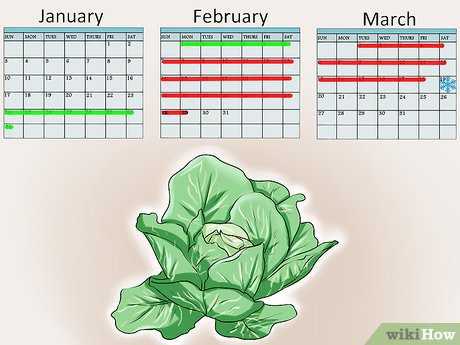
In addition to sowing timing, other factors can also affect the growth and yield of cabbage:
- Soil Preparation: Prepare the soil well before sowing by loosening it and adding organic matter to improve drainage and nutrient availability.
- Spacing: Provide adequate spacing between plants to allow for proper growth and airflow, which can help prevent diseases.
- Watering: Cabbage plants require regular watering to maintain consistent moisture levels in the soil. Avoid overwatering as it can lead to diseases and rotting.
- Fertilization: Apply balanced fertilizer during sowing or transplanting to provide essential nutrients for healthy growth.
- Pest and Disease Control: Monitor your cabbage plants regularly for pests and diseases. Implement appropriate control measures to prevent damage and ensure a healthy crop.
By considering these factors and calculating the ideal sowing timing for cabbage, you can maximize your chances of growing a successful and environmentally friendly crop. Remember to adapt the sowing timing recommendations to your specific climate and local conditions for optimal results.
Calculating the Optimal Spacing between Cabbage Plants
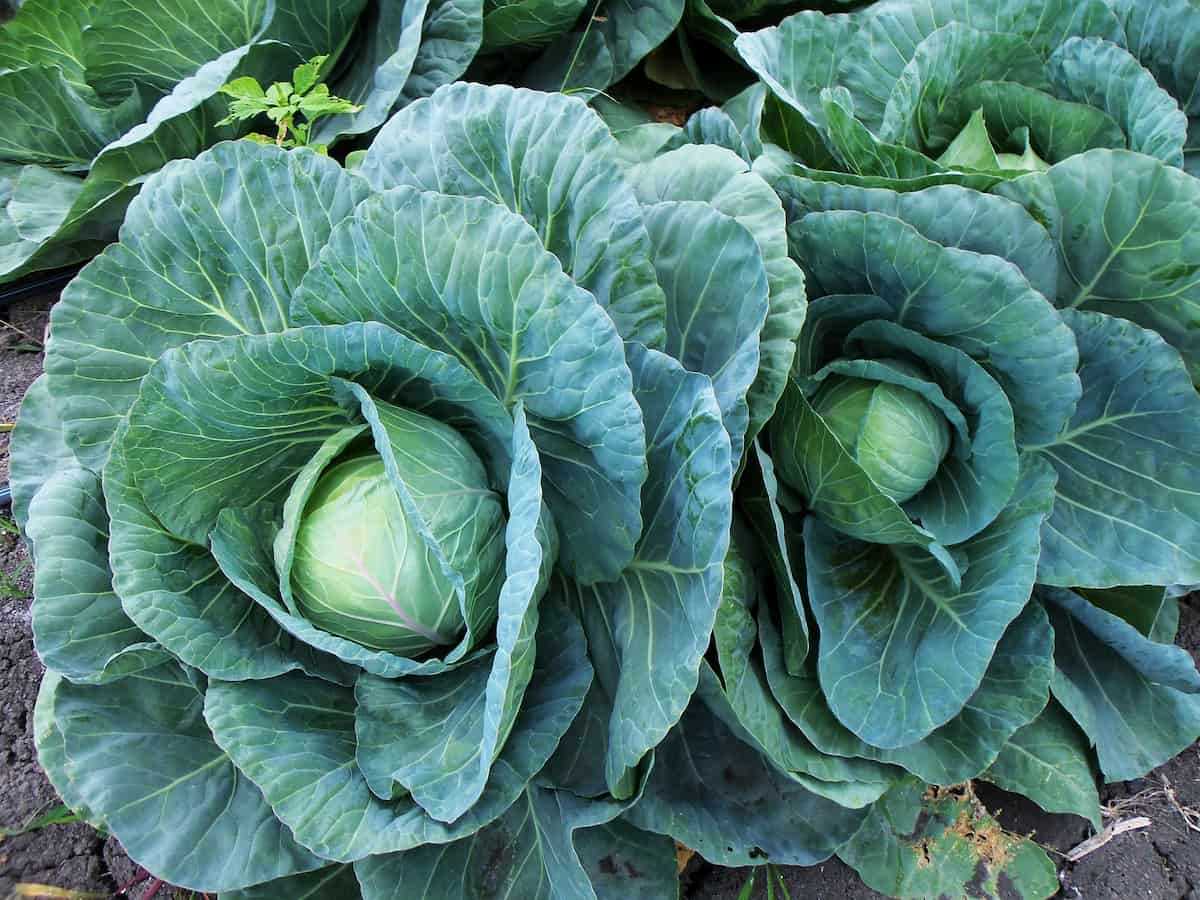
When growing cabbage, it is essential to give each plant enough space to grow and develop properly. Inadequate spacing can lead to competition for resources among the plants, resulting in smaller heads and decreased productivity. On the other hand, excessive spacing can lead to wasted space and reduced overall yield. Therefore, it is crucial to calculate the optimal spacing between cabbage plants.
Factors to Consider
Several factors should be taken into consideration when determining the spacing between cabbage plants:
- Cabbage variety: Different varieties of cabbage have varying growth habits and sizes. Compact varieties require less spacing, while larger varieties need more room to grow.
- Available space: The amount of space available in your garden or field will determine how close or far apart you can plant your cabbage.
- Desired cabbage size: If you prefer larger heads of cabbage, greater spacing is recommended to allow the plants to develop fully.
- Cultural practices: Some cultural practices, such as using mulch or providing extra nutrients, can influence how closely cabbage plants can be spaced.
Recommended Spacing Guidelines
While exact spacing requirements may vary depending on the factors mentioned above, here are some general guidelines for spacing cabbage plants:
| Cabbage Variety | Spacing |
|---|---|
| Compact varieties | 12-18 inches (30-45 cm) |
| Large varieties | 18-24 inches (45-60 cm) |
These guidelines provide a starting point for determining the spacing between cabbage plants. It is important to remember that adjusting the spacing based on the specific conditions and requirements of your growing environment is necessary for optimal results.
By calculating and implementing the proper spacing between cabbage plants, you can ensure healthy growth, maximize yield, and obtain high-quality, environmentally friendly cabbage for your enjoyment.
Maintaining the Health of Cabbage Plants: Pest and Disease Control
Cabbage plants can be susceptible to a range of pests and diseases. By implementing effective pest and disease control measures, you can ensure the health and vitality of your cabbage crop. Here are some methods to help you maintain the health of your cabbage plants:
Pest Control:
- Inspect regularly: Regularly inspect your cabbage plants for signs of pests. Look for chewed leaves, holes, or the presence of small insects.
- Handpick pests: If you notice any pests on your cabbage plants, try handpicking them and removing them from the plants. This can help prevent further damage.
- Use insecticidal soap: Insecticidal soap can be an effective method for controlling pests on cabbage plants. Follow the instructions on the soap for proper application.
- Encourage beneficial insects: Some insects, such as ladybugs and lacewings, feed on cabbage pests. Planting flowers and herbs that attract beneficial insects can help control pest populations.
- Use row covers: Row covers can be used to protect cabbage plants from pest attacks. These covers create a physical barrier that prevents pests from reaching the plants.
Disease Control:
- Practice crop rotation: Avoid planting cabbage in the same location year after year. Rotate your crops to prevent the buildup of soil-borne diseases that can affect cabbage plants.
- Ensure proper spacing: Plant your cabbage plants with adequate spacing to promote good airflow and prevent the spread of diseases.
- Remove infected plants: If you notice any cabbage plants with signs of disease, promptly remove and destroy them to prevent the spread of the disease to healthy plants.
- Apply fungicides: In cases of severe disease outbreaks, you may need to apply fungicides to control the spread of disease. Follow the instructions on the fungicide and apply as necessary.
- Maintain proper watering: Avoid overwatering cabbage plants, as excessive moisture can promote the growth of fungal diseases. Water plants at the base and avoid wetting the leaves.
By following these pest and disease control measures, you can ensure the health and productivity of your cabbage plants. Regular monitoring and prompt action are key to maintaining a thriving cabbage crop.
Organic Fertilizers and Nutrient Management for Environmentally Friendly Cabbage
One of the key factors in growing environmentally friendly cabbage is the use of organic fertilizers and proper nutrient management. By adopting these practices, farmers can reduce the environmental impact of cabbage cultivation while still ensuring a high-quality and nutritious harvest.
Benefits of Organic Fertilizers
Organic fertilizers, such as compost, manure, and green manure, offer several benefits for growing cabbage:
- They provide essential nutrients to the soil in a natural and slow-release form, ensuring a steady supply of nutrients for the cabbage plants.
- Organic fertilizers improve soil structure, promoting better root development and water retention.
- They enhance soil fertility by increasing microbial activity, which aids in nutrient availability for the plants.
- Organic fertilizers are environmentally friendly, as they do not contribute to water pollution or harm beneficial organisms.
Nutrient Management for Cabbage
Proper nutrient management is crucial for achieving optimal cabbage growth while minimizing environmental impacts. Here are some key considerations:
- Conduct a soil test to determine the nutrient levels and pH of the soil. This helps identify any deficiencies or imbalances that need correction.
- Based on the soil test results, apply organic fertilizers to meet the specific nutrient requirements of cabbage. Use a balanced fertilizer that provides a good mix of essential nutrients, including nitrogen, phosphorus, and potassium.
- Consider incorporating green manure crops, such as clover or legumes, into the rotation to improve soil fertility and fix nitrogen naturally.
- Avoid over-fertilization, as excessive nutrient application can lead to nutrient runoff and water pollution. Follow recommended application rates and timing.
Additional Tips for Environmentally Friendly Cabbage Production
In addition to using organic fertilizers and managing nutrients, here are a few more tips for environmentally friendly cabbage production:
- Practice crop rotation to minimize pest and disease pressure and reduce the need for chemical pesticides.
- Implement integrated pest management (IPM) strategies, including the use of beneficial insects and cultural controls, to prevent pest outbreaks.
- Maintain good irrigation practices to conserve water and minimize water runoff.
- Control weeds through mulching, hand weeding, or mechanical methods rather than relying solely on herbicides.
By adopting these organic fertilizers and nutrient management practices, farmers can grow environmentally friendly cabbage that is not only safe for consumption but also sustainable for the planet.
Harvesting and Storing Cabbage: Tips for Extending the Shelf Life
Harvesting cabbage at the right time and storing it properly can significantly extend its shelf life and ensure that you can enjoy your freshly grown cabbage for months to come. Here are some tips on how to harvest and store cabbage to keep it fresh and crispy:
Harvesting Cabbage
- Harvest cabbage when the heads are firm and solid to the touch. The size of the cabbage head will depend on the variety you are growing, but they should generally be fully formed and dense.
- Use a sharp knife to cut the cabbage head from the base of the plant, leaving a few outer leaves intact.
- Avoid pulling or twisting the cabbage, as this can damage the plant.
- Remove any damaged or diseased leaves from the outer layers of the cabbage head before storing.
Storing Cabbage
- For short-term storage, you can refrigerate cabbage in the crisper drawer of your refrigerator. Keep the cabbage head intact and place it in a perforated plastic bag to maintain humidity.
- For long-term storage, you can store cabbage in a cool, dark, and humid place, such as a root cellar or a basement. Make sure the temperature is around 32°F (0°C) and the humidity is around 95%. Wrap each cabbage head in a few layers of damp newspaper or place them in perforated plastic bags to maintain humidity.
- Check your stored cabbage regularly for any signs of rot or pests. Remove any damaged or rotten cabbage to prevent spoilage.
Extending Shelf Life
To extend the shelf life of cabbage even further, you can consider the following tips:
- Don’t wash cabbage before storing it, as moisture can promote rotting.
- Store cabbage away from fruits, as the ethylene gas produced by fruits can accelerate the ripening process and cause cabbage to spoil faster.
- If you have excess cabbage, you can blanch and freeze it for long-term storage. Simply cut the cabbage into wedges or shred it, blanch it in boiling water for a few minutes, cool it quickly in ice water, and pack it in airtight containers or freezer bags.
- If you notice any signs of decay or mold on stored cabbage, remove the affected layers and use the remaining cabbage as soon as possible.
By following these tips, you can maximize the shelf life of your harvested cabbage and continue to enjoy its fresh and crunchy taste throughout the year.
“Question-Answer”
What are the secrets to growing cabbage?
Some of the secrets to growing cabbage are calculating the sowing timing correctly, providing the right environment for the cabbage plants, using environmentally friendly practices, and taking appropriate care of the plants.
How can I calculate the sowing timing for cabbage?
Calculating the sowing timing for cabbage depends on various factors such as the variety of cabbage, the climate conditions of your region, and the desired harvest time. It is important to consider the germination time, growth rate, and temperature preferences of the particular cabbage variety you are planting. Consulting a local agricultural extension office or experienced growers in your area can provide more specific guidelines for sowing cabbage.
What kind of environment does cabbage require to grow well?
Cabbage requires a cool and moist environment to grow well. It prefers a temperature range of 45 to 75 degrees Fahrenheit and well-draining soil with a pH of 6.0 to 6.8. Additionally, cabbage plants need full sun exposure for at least six hours a day. Providing adequate spacing between plants and ample air circulation can also promote healthy growth and prevent diseases.
How can I grow cabbage while minimizing the use of chemical pesticides?
To grow cabbage in an environmentally friendly manner, you can take several steps. Firstly, practice crop rotation by avoiding planting cabbage in the same spot every year to prevent the buildup of pests and diseases. Secondly, use organic pest control methods such as hand-picking pests, applying insecticidal soaps or neem oil, and using physical barriers like row covers. Additionally, growing companion plants like marigolds or herbs can help deter pests naturally.
What care does cabbage require after sowing?
After sowing cabbage, it is important to provide proper care to ensure healthy growth. This includes regular watering to keep the soil consistently moist but not waterlogged. Mulching around the plants can help retain moisture and prevent weed growth. Fertilize the plants with a balanced organic fertilizer every few weeks and monitor for any signs of pests or diseases. Removing damaged or diseased leaves and providing support for the plants as they grow can also be part of the care routine.







